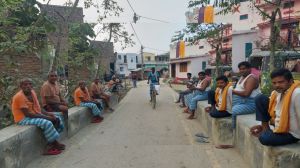The maneaters of Kumaon
FEAR stalks the hills of Uttaranchal. As the sun goes down, people especially in villages, don’t venture out. Just a fortnight ago an e...

FEAR stalks the hills of Uttaranchal. As the sun goes down, people especially in villages, don’t venture out. Just a fortnight ago an eight year old boy in Kumrada village near Barhamkhal in Uttarkashi district became the 120th person in three years to be killed by a leopard. Another 11 year old boy was injured by the same leopard.
More people have been killed or maimed in Uttaranchal in the three year of its creation by maneating leopards than any other cause.
The maneaters of Uttaranchal have always been part of jungle lore, popularised by the great hunter Jim Corbett. They have become steadily more active in the hills: they have killed 120 and injured 364 people. And they have killed 3,571 cattle.
Shrikant Chandola, Chief Wildlife Warden of Uttaranchal, puts the problem down to shrinking leopard habitat and prey base.
Uttaranchal, which has 60 per cent of its land mass under forest, has seen the numbers of leopards go up over the years due to conservation efforts. Official animal census records show that while there were only 690 leopards in 1984, the number went up to 1,961 in 2001 and 2,090 in 2003.
‘‘Basically, total exhaustion of natural prey in the hills has forced these animals to attack human beings and domestic cattle. Hunting has also reduced the natural prey of these leopards,’’ says S.P. Goyal, a scientist working on a leopard project at the Dehra Dun-based Wildlife Institute of India.
Pauri Garhwal district, which has the highest concentration of ex-servicemen with licensed guns, is the worst affected area stalked by more than half a dozen maneaters. Search for food has forced the leopards to even reach towns and cities. Dehra Dun alone has reported many cases of straying cats.
Nineteen leopards have so far been declared maneaters in the state and seven of them have been killed by the hunters of the wildlife department in the district.
Meanwhile, the villages of Uttaranchal live in the fear of the next leopard attack.



- 01
- 02
- 03
- 04
- 05




























